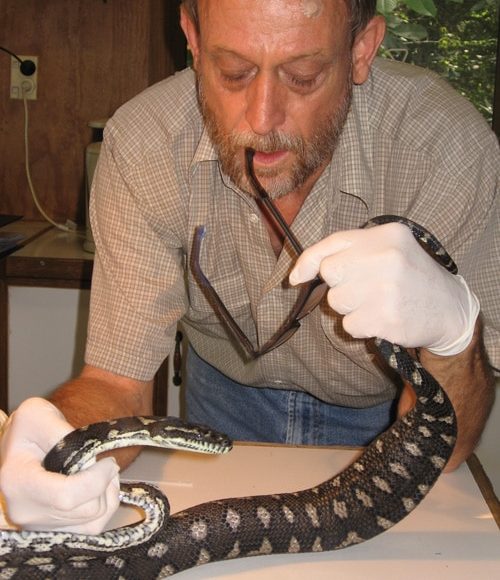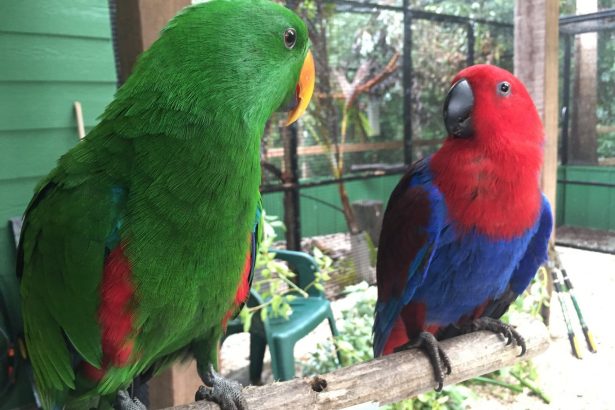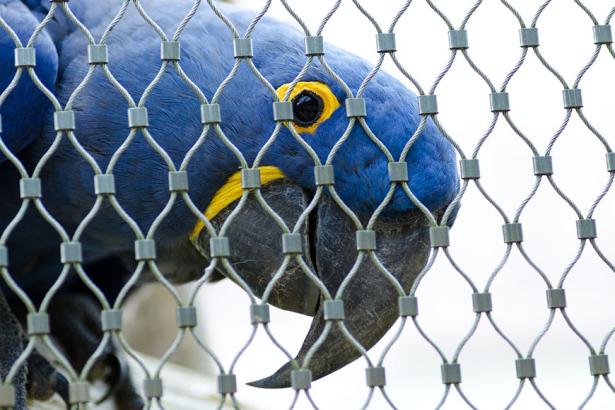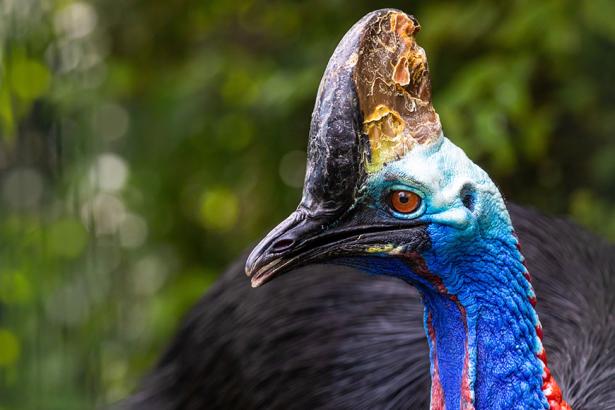The two basics of reptile husbandry that are most frequently misunderstood are correct feeding of a balanced diet and provision of the correct thermal environment for the specific reptile.
Both these aspects of husbandry are intimately involved in the “cold blooded” metabolism of reptiles.
What “cold blooded” means: Reptiles are ecothermic, this means they obtain their body heat from external sources. Generally speaking, this means the sun. They are solar powered! Reptiles are not cold, they actually are quite warm. They maintain and regulate their body temperatures within a narrow temperature range, specific for each species. They are called behavioral thermo regulators – put simplistically, this means they move into the sun to warm up and into the shade to cool down. They do not produce any body heat by burning up food.
Warm blooded animals – Mammals (people, cats, dogs) and birds on the other hand, maintain their body temperatures (also within a narrow range – specific for each species) by producing heat internally by burning up food.
Warm blooded animals need a lot of food (compared to reptiles) to maintain their temperatures. Reptiles just need the sun!
Reptiles use their food mainly for growth (none burnt for heat) and consequently, only need 10 – 20% of the food intake of a mammal of equal body weight.
Reptiles, like all animals, can only grow so fast. When fed past this point, they can only lay down the excess food as fat deposits.
Most captive reptiles are fed 1000’s of kilojoules more than they need. Obesity is one of the most common health problem s I see in reptiles at my surgery.
General Feeding guidelines: examples
| Turtles, Lizards | Hatchlings | feed every day or two |
| Juveniles | 2 – 3 times a week | |
| Adults | 1 – 2 times a week |
Meal size is very important. As a rule of thumb, the meal (a complete balanced diet – not lacking in vitamins or minerals) should be about the size of the animal’s head. Note – juvenile turtles often go into a “feeding Frenzy” and will gorge themselves if allowed. It’s like trying to fill up the pet Labrador – a bottomless pit.
| Snakes | Hatchlings | once a week |
| Juveniles | once a fortnight | |
| Adults | once a month |
Again, meal size is very important. Hatchling snakes are fed pinky, fuzzy or weaner (half grown) mice, depending on the snake species i.e. size. E.g. Spotted python hatchling given weekly pinky, whereas an Olive Python hatchling – given a weekly weaner.
I advise owners to measure the snake’s snout to vent (cloaca) length – use a piece of string/bootlace and measure this with a tape measure. At the same time check the snake’s weight on some digital gram scales (kitchen scales – K Mart.). A snake putting on weight without any appreciable increase in length is getting fat!
Snakes do NOT need larger and larger sized meals to make their head and jaws grow, no animal does. (There are some amazing “old wives” tales out there regarding reptiles) Snakes grow like any other animal. Their jaws are also specifically adapted to dislocate at the joint and where the upper and lower jaws meet – under the nostrils and at the chin respectively – they are not fused, but connected by an elastic ligament. This means that any snake can swallow a meal 3 – 4 times larger than its head size. In fact, over feeding (often called “power feeding”) to grow them up quickly – results in a large, unhealthy, overweight snake with a noticeably smaller head – Pin Head Syndrome.
Over the last three years (since pet stores in Queensland began selling reptiles) I have noticed a major trend towards feeding rats to all and any snakes. This is usually totally inappropriate and a case of massive overfeeding. Consider – one adult mouse averages 30gms, an adult rat weighs 350 – 500gms – i.e. equal to 12 – 14 mice! Even weaner rats equal 4 – 6 mice. If a snake is not over 2 meters long; rats are contra-indicated.
Rats also cause other problems – their fur is thicker, longer and coarser than mice fur. I am frequently presented with severely constipated snakes – usually fat and blocked up with massive plugs of rat fur.
It is very poor husbandry to feed rats to commonly kept pythons and similar to “Do you want to upgrade and do you want fries with that?”
I am frequently putting obese snakes on diets consisting of vitamin, mineral supplements in the drinking water BUT NO food for one – two years! E.g. An adult spotted python in my surgery was presented as being “lethargic and not eating”. It weighed over 600 gms – a healthy weight in this species is about 300 – 350 gms. This snake was not fed for 2 years and 2 months – its weight has dropped to 400gms. It is bright, alert and shed normally last week.
Obesity predisposes reptiles to many diseases and secondary complications – the same as in people. It is one of the most common killers of reptiles that I see.
An interesting fact – field studies and research on wild pythons has shown that the average interval between feeds is 40 days.
The next article will look at the other common reptile killer – the failure to provide an adequate temperature gradient that meets the required Preferred Optimal Temperature Zone (P.O.T.Z.) for that specific reptile – i.e. keeping them too cold.
FAQs
Meal size is important for reptiles because overfeeding can lead to obesity and other health problems. Offering prey items that are too large can also cause injury or digestive issues, resulting in a visit to your nearest reptile vet. As a general rule of thumb, the meal should be about the size of the animal’s head.
Overfeeding a reptile can lead to obesity, which predisposes reptiles to many health issues and secondary complications such as a shortened lifespan, reduced mobility and activity, and increased risk of disease.
Unless a snake is over 2 metres long, feeding rats is usually inappropriate and can lead to overfeeding. Rats are also thicker, longer, and coarser than mice, which can cause constipation in some snakes. Also, rats are high in fat and can lead to obesity and other health problems in the snake.
“Cold blooded” means that reptiles obtain their body heat from external sources and do not produce any body heat by burning up food. They regulate their body temperatures within a narrow temperature range, specific for each species.
Reptiles regulate their body temperature through behavioural thermoregulation, such as basking in the sun or seeking shade, and by moving to areas with different temperatures in their environment.
Feeding of reptiles differs from the feeding of warm-blooded animals because reptiles have a slower metabolism and require less frequent feeding. They also do not need as much food as warm-blooded animals because they do not use food to produce body heat – they mainly use their food for growth.
Yes, snakes can swallow prey 3-4 times larger than their head size because their jaws are specifically adapted to dislocate at the joint. However, it is not true that snakes need larger and larger sized meals to make their head and jaws grow. This is a common misconception.






Hi there, my husband jamie and I Kathryn cook, came to visit you with our Stinson Python sookie last year. And since then we have got another Python. You had given us the name and number of a man who custom built encloursers but I have lost it and am hoping you might be able send it to us again.
Thanks.
[email protected]
0430881275